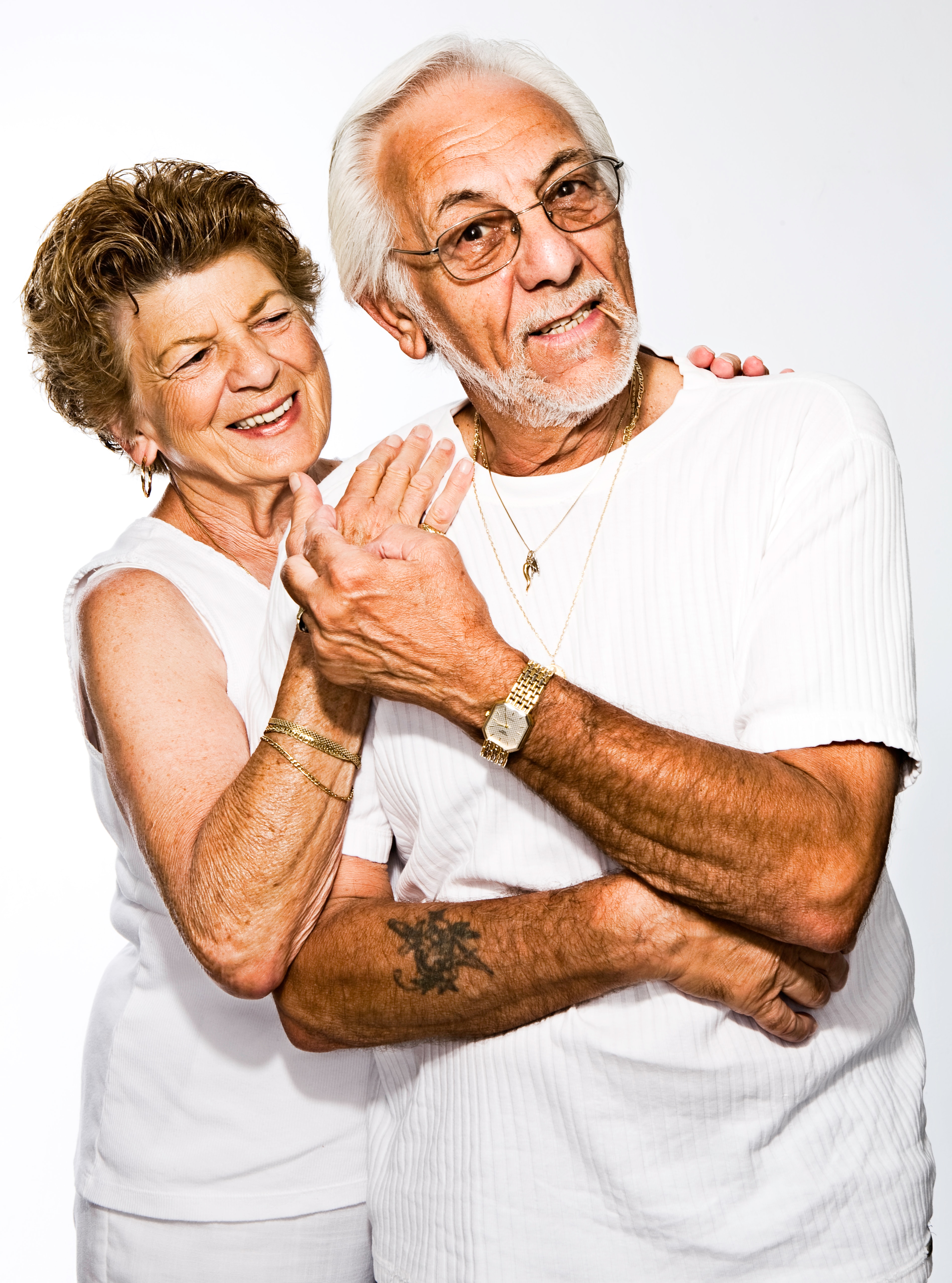Clinical profile of oral mucosa lesions in elderly patients: a 20-year retrospective study.
Keywords:
Dental care, quality of life, elderly, oral medicine, oral lesionsMain Article Content
BACKGROUND: Life expectancy has considerably increased resulting in population aging. Studies evaluating the outcomes of aging in oral health are scarce.
OBJECTIVE: Evaluate retrospectively the profile of elderly patients from a public Oral Medicine Center during a period of 20 years.
METHODS: A qualitative and quantitative retrospective observational study was conducted analyzing medical records from an oral medicine service from January 1994 to December 2014. Results were reported as mean ± standard deviation for quantitative variables and percentages for categorical variables. The Chi-square test and multivariate binary logistic regression were performed when necessary to a significance level of 5%.
RESULTS: 2,690 medical records were retrieved, comprising of 61% women and 39% men with an average age of 68.8 ± 6.79 years. Xerostomia was significantly associated to female gender, hypoglycemic usage, antihypertensive usage, psychotropic usage, and analgesics and anti-inflammatory usage. As for candidiasis, an association with age, alcohol consumption, and use of complete dentures was found.
CONCLUSION: A longer life expectancy should be accompanied by a long-term care follow-up of the population. Diseases and side effects related to the elderly are going to be more common. Therefore, dental care services should aim to prevent and treat these complications as way to improve the elderly’s quality of life.
Mujica V, Rivera H, Carrero M. Prevalence of oral soft tissue lesions in an elderly Venezuelan population. Med Oral Patol Oral Cir Bucal. 2008;13:270-4. PMID: 18449108.
Kalache A, Veras RP, Ramos LR. O envelhecimento da população Mundia. Um desafio novo [The aging of the World population: a new challenge]. Rev Saude Publica. 1987;21:200-10. PMID: 3445102; https://doi.org/10.1590/s0034-89101987000300005.
Silva DD, de Sousa MLR, Wada RS. Autopercepção e condições de saúde bucal em uma população de idosos. Cad Saude Pub. 2005;21(4):1251-9. https://doi.org/10.1590/S0102-311X2005000400028.
Silva EMM, Barão VAR, Santos DM, et al. Principais alterações e doenças bucais que acometem o paciente geriátrico – revisão da literatura. Odonto. 2011; 19 (37): 39-47. Portuguese.
Cueto A, Martínez R, Niklander S, et al. Prevalence of oral mucosal lesions in an elderly population in the city of Valparaiso, Chile. Gerodontology. 2013 Sep;30(3):201-6. doi/10.1111/j.1741-2358.2012.00663.x
Bof F, de Franca A, Makumbundu P. Relationship between oral health, nutrient intake and nutritional status in a simple of Brazilian elderly people. Gerodontology. 2009; 26: 40–45. doi/10.1111/j.1741-2358.2008.00220.x
Mello dos Santos C, Balbinot J, Pereira D, Neves F. Denture stomatitis and its risk indicators in south Brazilian older adults. Gerodontology. 2010; 27: 134–140. doi/10.1111/j.1741-2358.2009.00295.x
Jainkittivong A, Aneksuk V, Langlais R. Oral Mucosal lesions in denture wearers. Gerodontology. 2010; 27: 26–32. doi/10.1111/j.1741-2358.2009.00289.x
Coelho S, Bittar J, Portugal A et al. Medication in elderly people: its influence on salivary pattern signs and symptoms of dry mouth. Gerodontology. 2010; 27: 129–133. doi/10.1111/j.1741-2358.2009.00293.x
Saintrain MV, Holanda TG, Bezerra TM, de Almeida PC. Prevalence of soft tissue oral lesion in elderly and its relations with deleterious habits. Gerodontology. 2012; 29(2):130-4. doi/10.1111/j.1741-2358.2011.00618.x
Instituto Nacional de Câncer José de Alencar Gomes da Silva. Estimativa 2018: incidência de câncer no Brasil. Rio de Janeiro: INCA, 2017. Portuguese.
Jorge J, Almeida OP, Bozzo L, Scully C, Graner E. Oral mucosal health and disease in institutionalized elderly in Brazil. Community Dent Oral Epidemiol. 1991; 19: 173–175. doi/10.1111/j.1600-0528.1991.tb00136.x
Coelho CMP, Sousa YTCS, Dare MZ. Denture-related oral mucosal lesions in a Brazilian school of dentistry. J Oral Rehabil. 2004; 31: 135–139. doi/10.1111/j.1365-2842.2004.01115.x
Scott J, Cheah SB. The prevalence of oral mucosal lesions in the elderly in a surgical biopsy population: a retrospective analysis of 4042 cases. Gerodontology. 1989; 8: 73–78. doi/10.1111/j.1741-2358.1989.tb00407.x
Naka O, Anastassiadou V. Assessing oral health promotion determinants in active Greek elderly. Gerodontology. 2012;29(2):e427-34. doi/10.1111/j.1741-2358.2011.00491.x
Ibayashi H, Fujino Y, Pham TM, Matsuda S. Intervention study of exercise program for oral function in healthy elderly people. Tohoki J ExpMed. 2008;215:237–45. doi.org/10.1620/tjem.215.237
The 2010 Brazilian Census. Brazilian Institute of Geography and Statistics. Brasília: IBGE, 2011.
Corrêa L, Frigerio MLMA, de Sousa SCOM, Novelli MD. Oral lesions in elderly population: a biopsy survey using 2250 histopathological records. Gerodontology. 2006. 23; 48-54. doi/10.1111/j.1741-2358.2006.00090.x
Mallo L, Gerardo-Rodriguez G, Goiriena FJ, Lafuente R. Pathology of the oral mucosa in the Spanish institutionalized elderly. Med Oral. 2000; 5:177–186. PMID: 11507554
Ekelund R. Oral mucosal disorders in institutionalized elderly people. Age Ageing. 1988; 17: 193–198. doi.org/10.1093/ageing/17.3.193
Lin HC, Corbet EF, Lo EC. Oral mucosal lesions in adult Chinese. J Dent Res. 2001; 80: 1486–1490. doi/10.1177/00220345010800052001
Fleishman R, Peles DB, Pisanti S. Oral mucosal lesions among elderly in Israel. J Dent Res. 1985; 64: 831–836. doi/10.1177/00220345850640051001
Rabiei M, Kasemnezhad E, Masoudi H et al. Prevalence of oral and dental disorders in institutionalized elderly people in Rasht, Iran. Gerodontology. 2010; 27: 174–177. doi/10.1111/j.1741-2358.2009.00313.x
Pentenero M, Broccoletti R, Carbone M et al. The prevalence of oral mucosal lesions in adults from the Turin area. Oral Dis. 2008; 14: 356–366. doi: 10.1111/j.1601-0825.2007.01391.x.
Närhi TO, Meurman JH, Ainamo A, et al. Association Between Salivary Flow Rate and the Use of Systemic Medication Among 76-, 81-, and 86-year-old Inhabitants in Helsinki, Finland. J Dent Res. 1992; 71:1875-80. doi/10.1177/00220345920710120401
Paredes-Rodríguez VM, Torrijos-Gómez G, González-Serrano J, et al. Quality of life and oral health in elderly. J Clin Exp Dent. 8(5):e590-e596. doi: 10.4317/jced.53317
Downloads

This work is licensed under a Creative Commons Attribution-NonCommercial-NoDerivatives 4.0 International License.
Los autores/as conservan los derechos de autor y ceden a la revista el derecho de la primera publicación, con el trabajo registrado con la licencia de atribución de Creative Commons, que permite a terceros utilizar lo publicado siempre que mencionen la autoría del trabajo y a la primera publicación en esta revista.

